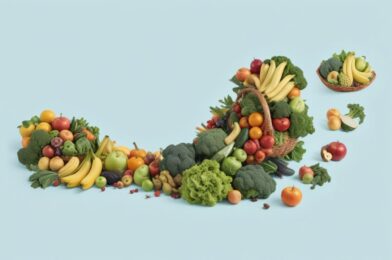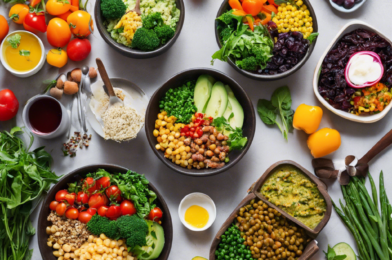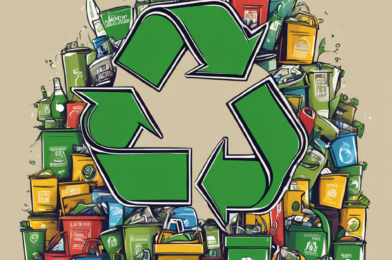The trend of upcycling – transforming discarded items into something new and useful – has captured the imagination of creators and environmentally conscious consumers alike. It’s a fun and innovative way to reduce waste and foster a more sustainable lifestyle. With a bit of creativity, that old piece of furniture or pile of discarded wood can be turned into something unique and valuable. Upcycling not only gives new life to old items but also helps reduce the demand for new products, thus conserving resources and energy. This practice encourages us to look at our possessions and waste with fresh eyes, seeing potential where others might see trash. From fashion to home decor, upcycling has found its way into various aspects of our lives, offering a sustainable alternative to the throwaway culture that has dominated consumer behavior for decades. As we become more aware of our environmental impact, upcycling presents an accessible and enjoyable way for individuals to contribute to a more sustainable future.
One of the most popular upcycling projects involves transforming old furniture. A simple coat of paint or a change of fabric can give new life to an old chair or table. For example, an outdated dresser can be revamped with a fresh paint job and new hardware, or an old door can be turned into a stylish dining room table with some sanding and refinishing. The result is a one-of-a-kind piece that adds character and charm to your home. Furniture upcycling not only saves money but also allows for personalization that mass-produced items can’t offer. It’s an opportunity to create pieces that perfectly match your style and needs. Even small changes, like replacing knobs on a cabinet or reupholstering a chair seat, can make a significant difference. For those new to DIY, furniture upcycling can be an excellent entry point, as it often requires minimal tools and skills to achieve impressive results. Moreover, by giving new life to old furniture, we’re preserving the craftsmanship and materials of the past, which often surpass the quality of modern, mass-produced items.
Another upcycling idea gaining traction is the transformation of plastic waste into functional items. Plastic bottles and containers can be cut, melted, or molded into a variety of useful objects. From plant pots and garden decorations to colorful outdoor chairs, the possibilities are endless. This type of upcycling not only reduces plastic waste but also showcases the beauty of recycling, inspiring others to follow suit. Innovative creators have found ways to turn plastic waste into everything from building materials to fashion accessories. For instance, plastic bottles can be transformed into sturdy brooms, decorative light fixtures, or even clothing fibers. Some companies are now using recycled ocean plastic to create shoes, bags, and other products, turning environmental cleanup into a source of raw materials. By finding new uses for plastic waste, we not only prevent it from polluting our environment but also reduce the demand for new plastic production, which is a significant source of greenhouse gas emissions.
For those with a green thumb, upcycling offers a unique way to enhance your garden. Old tires, wooden crates, or even broken appliances can be converted into raised garden beds or quirky planters. With a bit of soil and some seeds, you can create a vibrant and productive garden feature that adds a touch of personality to your outdoor space. Upcycled garden projects can range from simple container gardens made from repurposed household items to elaborate vertical gardens created from pallets or old gutters. These projects not only reduce waste but also make gardening more accessible, especially for those with limited space. Old ladders can become tiered plant stands, worn-out boots can transform into charming planters, and discarded kitchen items like colanders or teapots can find new life as hanging baskets. By incorporating upcycled elements into your garden, you’re creating a unique outdoor space that reflects your creativity while promoting sustainable practices.
Turning trash into treasure is not only rewarding but also contributes to a more sustainable future. Upcycling reduces the demand for new resources and diverts waste from landfills, helping to minimize our environmental footprint. It encourages us to view discarded items as a source of potential rather than rubbish, fostering a mindset of creativity and environmental awareness. This shift in perspective can lead to broader changes in our consumption habits, encouraging us to think twice before discarding items and to look for ways to extend the life of our possessions. Upcycling also connects us to the items we use daily, fostering a greater appreciation for the materials and craftsmanship involved in creating them. As we invest time and creativity into upcycling projects, we develop a stronger emotional connection to our belongings, countering the disposable mentality that has become so prevalent in modern society. By embracing upcycling, we’re not just creating new items; we’re participating in a movement towards more thoughtful, sustainable living.
The beauty of upcycling lies in its accessibility and versatility. Whether you’re a seasoned DIY enthusiast or a complete novice, there’s an upcycling project suitable for your skill level and interests. For beginners, simple projects like transforming glass jars into candle holders or turning old t-shirts into reusable shopping bags can be a great starting point. As you gain confidence and skills, you can tackle more complex projects like building furniture from reclaimed wood or creating intricate mosaics from broken tiles. Upcycling can be a solitary hobby or a social activity, with many communities organizing swap meets, workshops, and upcycling challenges to bring like-minded individuals together. These events not only provide inspiration and skill-sharing opportunities but also foster a sense of community around sustainable living practices. As you explore upcycling, you’ll likely find that it changes the way you look at everyday objects, spurring your creativity and problem-solving skills.
To get started on your upcycling journey, here are some simple project ideas to try:
1. Transform old mason jars into stylish drinking glasses or storage containers.
2. Repurpose used wine bottles into decorative vases or candle holders.
3. Give new life to outdated picture frames by repainting and adding fun fabric or paper to the borders.
4. Turn worn-out jeans into a stylish bag or wallet.
5. Use discarded wooden pallets to create unique shelving or a rustic coffee table.
6. Convert an old ladder into a bookshelf or plant stand.
7. Upcycle tin cans into pencil holders or luminaries.
8. Transform old suitcases into vintage-inspired side tables.
9. Create a unique wall clock from an old vinyl record.
10. Repurpose an old window frame into a rustic photo display.
These projects range from quick and easy to more time-intensive, allowing you to choose based on your available time and skill level. Remember, the key to successful upcycling is to approach each project with an open mind and a willingness to experiment.
Upcycling is more than just a fun and eco-friendly way to express your creativity while reducing waste. It’s a movement that challenges our throwaway culture and encourages a more thoughtful approach to consumption and waste. As you embark on your upcycling journey, you’ll likely find that it influences other areas of your life, leading to more conscious purchasing decisions and a greater appreciation for the resources we use daily. Upcycling can also be a great way to save money, as it allows you to create custom items without the high price tag often associated with artisanal or handmade goods. Moreover, upcycling projects can be a wonderful way to preserve memories and create meaningful gifts. An old family quilt can become a series of throw pillows, preserving the fabric while making it functional for everyday use. A collection of concert tickets can be transformed into a piece of wall art, celebrating cherished experiences. By infusing creativity and personal significance into our upcycling projects, we create items that are not just functional, but also emotionally valuable. So, roll up your sleeves, gather some discarded items, and let your imagination run wild – you might be surprised at the treasures you can create from what others consider trash!









